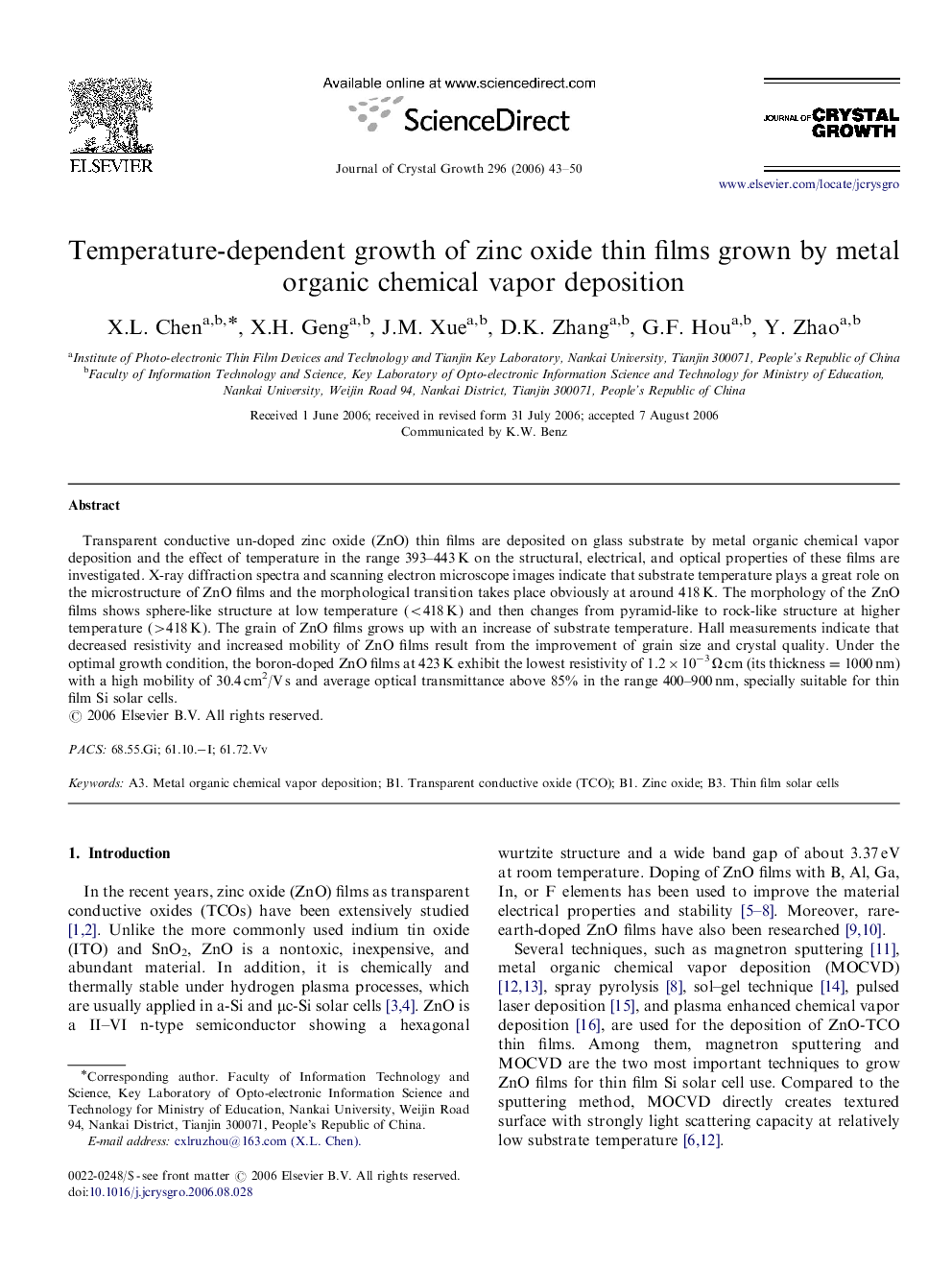| Article ID | Journal | Published Year | Pages | File Type |
|---|---|---|---|---|
| 1796105 | Journal of Crystal Growth | 2006 | 8 Pages |
Transparent conductive un-doped zinc oxide (ZnO) thin films are deposited on glass substrate by metal organic chemical vapor deposition and the effect of temperature in the range 393–443 K on the structural, electrical, and optical properties of these films are investigated. X-ray diffraction spectra and scanning electron microscope images indicate that substrate temperature plays a great role on the microstructure of ZnO films and the morphological transition takes place obviously at around 418 K. The morphology of the ZnO films shows sphere-like structure at low temperature (<418 K) and then changes from pyramid-like to rock-like structure at higher temperature (>418 K). The grain of ZnO films grows up with an increase of substrate temperature. Hall measurements indicate that decreased resistivity and increased mobility of ZnO films result from the improvement of grain size and crystal quality. Under the optimal growth condition, the boron-doped ZnO films at 423 K exhibit the lowest resistivity of 1.2×10−3 Ω cm (its thickness=1000 nm) with a high mobility of 30.4 cm2/V s and average optical transmittance above 85% in the range 400–900 nm, specially suitable for thin film Si solar cells.
